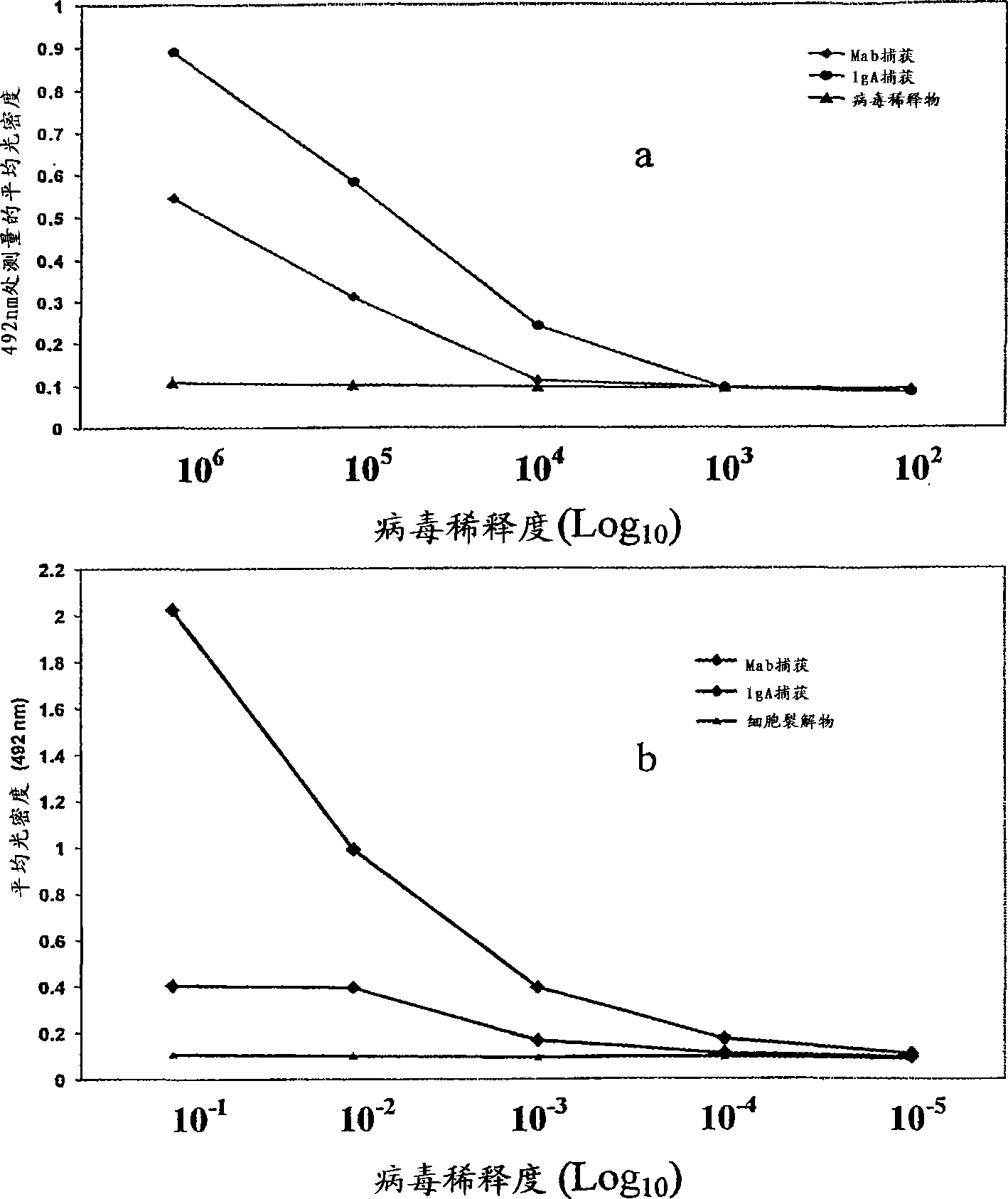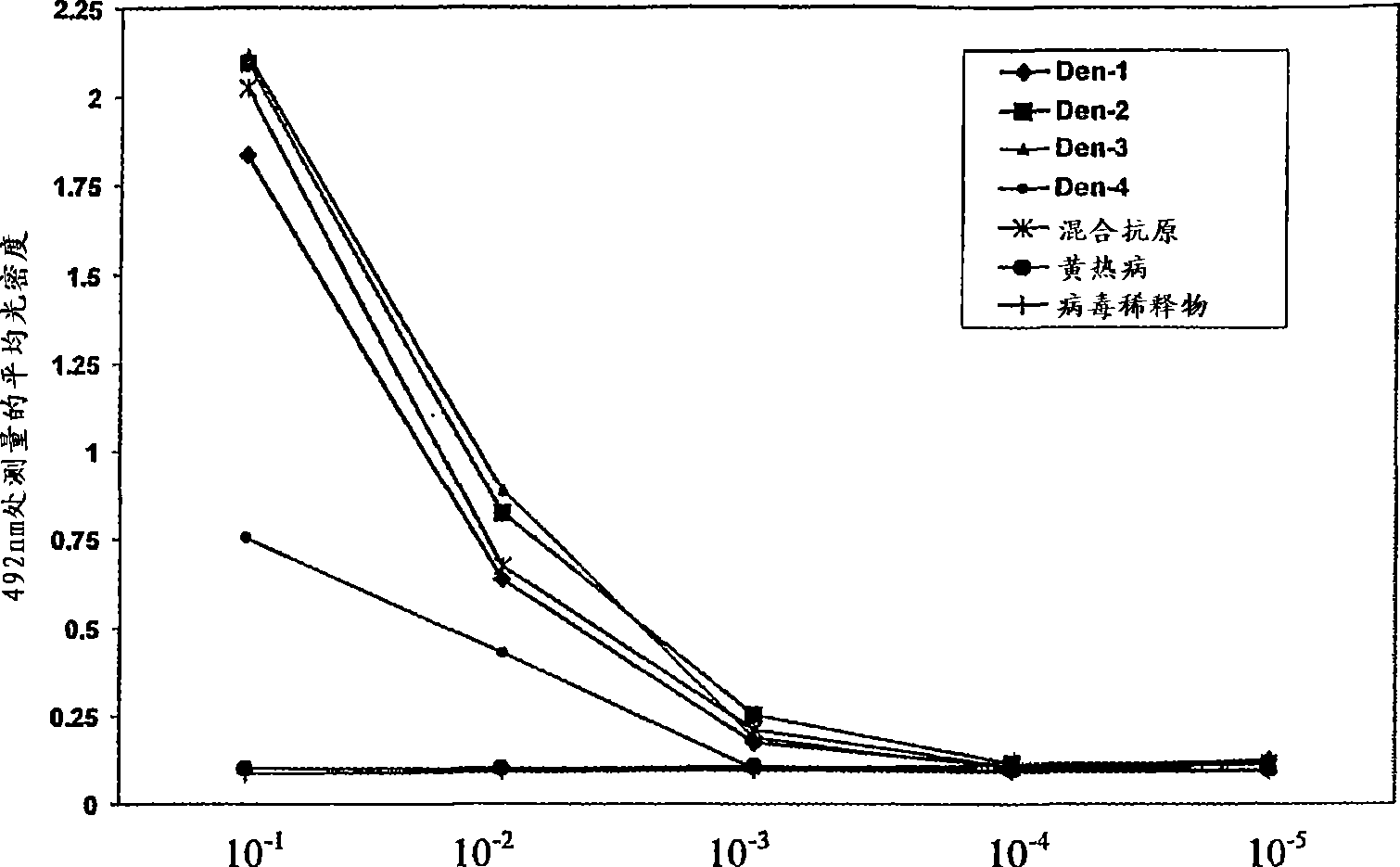Competitive enzyme linked immunosorbent assay (C-ELISA) for the detection of a flavivirus specific antibody
A flavivirus-specific technology, applied in the field of exposure of valuable substances and differential serum evaluation, can solve the problems of difficult diagnosis and unreliable serotyping
- Summary
- Abstract
- Description
- Claims
- Application Information
AI Technical Summary
Problems solved by technology
Method used
Image
Examples
Embodiment 1
[0194] Example 1 - C-ELISA for detection of dengue specific IgG
[0195] 1. Materials and methods
[0196] 1.1 Preparation of virus lysate antigens for C-ELISA: According to the method described in Cardosa et al., 2002, dengue virus antigen lysates were prepared for all four dengue virus serotypes. Briefly, dengue virus (5m.o.i.) was cultured in C6 / 36 cells, depending on the development of the cytopathic effect and the serotype of the virus, in virus maintenance medium containing 2% fetal bovine serum and incubated for 4- 5 days. The medium was decanted, the culture flask containing infected cells was washed 4 times with PBS, treated with 1 ml hypotonic buffer containing 1% trix100 for 1 hour, and finally centrifuged at 14000 rpm for 10 minutes. The supernatant was collected for detection of dengue population-specific and serotype-specific monoclonal antibodies by indirect ELISA, and 500 μl was dispensed into eppendorf tubes, and stored at -70°C for future use.
[0197] 1.2...
PUM
| Property | Measurement | Unit |
|---|---|---|
| diameter | aaaaa | aaaaa |
| Sensitivity | aaaaa | aaaaa |
| Sensitivity | aaaaa | aaaaa |
Abstract
Description
Claims
Application Information
 Login to View More
Login to View More - R&D
- Intellectual Property
- Life Sciences
- Materials
- Tech Scout
- Unparalleled Data Quality
- Higher Quality Content
- 60% Fewer Hallucinations
Browse by: Latest US Patents, China's latest patents, Technical Efficacy Thesaurus, Application Domain, Technology Topic, Popular Technical Reports.
© 2025 PatSnap. All rights reserved.Legal|Privacy policy|Modern Slavery Act Transparency Statement|Sitemap|About US| Contact US: help@patsnap.com



